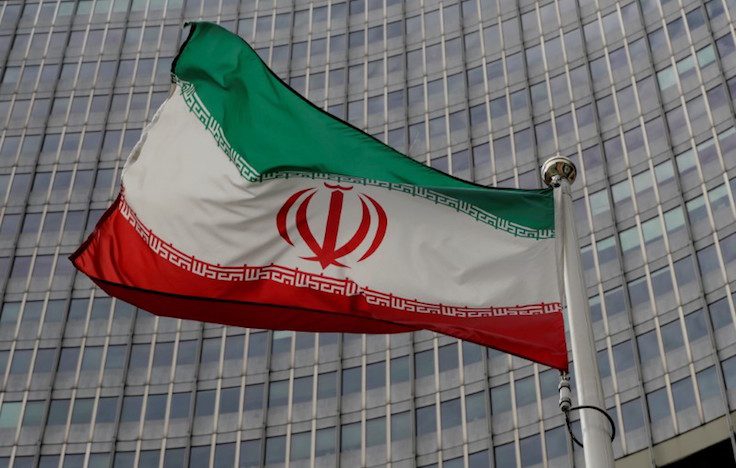Iran now has the capacity to fuel 6 nuclear warheads in 1 month’s time, and 10 within 4 months, according to an analysis of the latest data released by a nuclear watchdog.
Iran has the resources and technical know-how to "produce enough [weapons-grade uranium] for six nuclear weapons in one month, eight in two months, nine in three months, and ten in four months," according to the Institute for Science and International Security, a think tank that reviewed the latest disclosures about Tehran’s atomic stockpile from the International Atomic Energy Agency (IAEA).
This is significantly faster than the three-to-four months it would have taken Iran to build just one nuclear weapon in 2020 when economic sanctions were at their strictest before the Biden administration took office. Now, it would take Iran just 12 days to produce the fuel needed for its first nuclear warhead and a total of six by the end of one month. This also is an increase from May 2023 estimates when it was thought Iran had enough uranium to power five nuclear weapons.
Iran has been growing its stockpile of highly enriched uranium since President Joe Biden took office and restarted diplomacy over a revamped version of the 2015 nuclear pact. In addition to not enforcing key sanctions on Iran—providing it access to nearly $45 billion in oil revenue—the administration recently freed up an additional $16 billion, a portion of which was the result of a hostage deal with the hardline regime.
"Washington's de-escalation policy has clearly failed," said Andrea Stricker, a veteran nuclear analyst who worked on the latest analysis about Iran’s current nuclear capacity. "Iran has amassed enough enriched uranium since May—after the negotiation of the alleged de-escalation deal—to grow its breakout capability from eight nuclear weapons to ten weapons."
Analysts at the Institute for Science and International Security are also concerned that "this breakout could be difficult for the IAEA to detect promptly, if Iran delayed inspectors’ access," as it has done in the past.
Within the second month of crossing the nuclear threshold, Iran could use its remaining stockpile of highly enriched uranium to produce "an additional two weapons," according to the institute’s findings.
Although Iran has slightly slowed its enrichment of uranium and downgraded some of its stores, neither move has "improved the breakout situation; in fact, the situation worsened," according to the report.
Iran also obfuscates a portion of its nuclear work from international inspectors.
"For more than two and a half years Iran has not provided updated declarations and the Agency has not been able to conduct any complimentary access … to any sites and locations in Iran," the IAEA reported.
Because Iran is preventing the installation of "monitoring and surveillance equipment," the IAEA doubts "its ability to ascertain whether Iran has diverted or may divert advanced centrifuges," the machines that enrich uranium to levels needed for a weapon, according to the Institute. "A risk is that Iran could accumulate a secret stock of advanced [nuclear enrichment] centrifuges, deployable in the future at a clandestine enrichment plant or during a breakout at declared sites."
"Another risk," the group reported, "is that Iran will establish additional centrifuge manufacturing sites unknown to the IAEA." Iran has already "proven its ability to move manufacturing equipment to new, undeclared sites, further complicating any future verification effort and contributing to uncertainty about where Iran manufactures centrifuges."
This uncertainty highlights Iran’s efforts to hide a portion of its enrichment capability from the international community. Already, "Iran is building a new facility in the mountains near [the] Natanz [nuclear facility] that is deeply buried and could be a potential site for a new enrichment plant."
Iran’s decision to remove the IAEA’s surveillance and monitoring equipment from several sites has impeded the agency’s "ability to provide assurance of the peaceful nature of Iran’s nuclear program."
In the face of these moves, the Biden administration is seeking a nuclear deal with Iran that will free up billions more for the regime, assets that are likely to be used to strengthen the country’s nuclear program and military.
The only barrier to a deal is Congress, though lawmakers have not demanded an Iran policy briefing from the Biden administration since May.
"Together with Republicans, Senate Democrats must do the difficult thing: oppose Biden's new agreement and stop the hemorrhaging of leverage and financial resources to Iran," said Stricker, who is also a research fellow at the Foundation for Defense of Democracies think tank. "Those funds enable Tehran's nuclear build-up and terrorist activities, while rewarding the regime for arming Russia against Ukraine. How bad must things get before Congress intervenes?"
